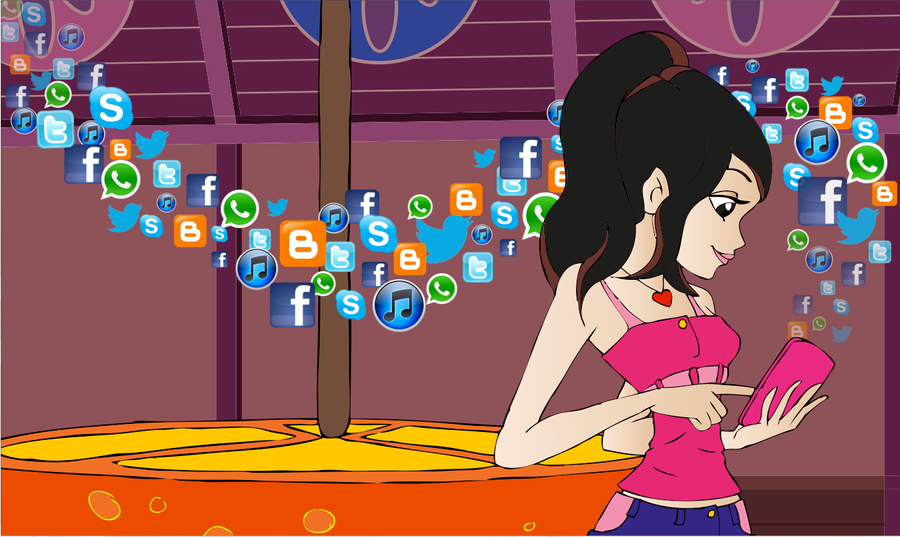By Guest Author Kaitlin Slorey: kslorey {} yahoo.com
As with many things young people use social media for, making sense of sexuality is one of the most important and life-affecting.
It holds, then, that as a society, we need to better understand how rapidly social media technologies are transforming, and how this could overwhelm our youth. Youth face a continuous struggle of contradicting beliefs regarding sexual values and norms. Deciding which behaviors on social media should be supported or disciplined puts forth an unclear sense of “controlled freedom” for youth interacting on social media.

Before social media, there were (and still are) beliefs that sexuality is something to be thought of as harmful to our youth, and thus has caused over-protection from sexual knowledge and openness. However, with highly sexualized popular media, these messages are nearly impossible to avoid.
When young people encounter sexual material in the media, they express moral concerns about such content, while equally valuing it as a source of information and learning.
Although young people seem more open-minded about sexuality than previous generations, Ridder suggests that they enforce stricter self-guiding morals on themselves.
Because of fast-paced changes in this digital age, this leaves little to no room for questioning or negotiating the behaviors that sexuality and social media bring about. We need to consider social media’s material as well as each platform’s important functions (particularly Tinder and Snapchat).
The results were based on 14 focus groups of Dutch-speaking youth in Belgium, including 89 participants from diverse backgrounds (52 girls and 37 boys), between the age of 14 and 19. The first 8 focus groups were conducted in 2012, and the last 6 took place in 2015. In doing so, the research was purposeful within the rapidly evolving culture of social media.
Discussion topics included displaying sexual identity, relationship status, exploring and experimenting with sexual desires through texts (status updates, hashtags, etc.), pictures (from profile pictures to selfies and snaps, etc.), and communicative interactions (chatting, commenting, texting, etc.). As opposed to direct experiences of the participants, this emphasized knowledge about values, and exploring the struggles youth face in a sexual culture in relation to social media.
Ridder noted, “When I asked young people about everyday intimate and sexual practices on social media, they usually talked about related risks and how to avoid them. Whether we talked about a relationship status on Facebook, posting or sending sexy pictures, looking for dates, or sending sexual messages, they found it smart to see sexuality as mostly private matters intended for outside of social media.”
Managing an online reputation and social media use, while balancing ambiguous social norms, was seen as a personal task where the individual is in charge of making these moral decisions. There is not one single way to understand what “good” sexual practices in social media are, but rather is heavily influenced by peer control.
Defining what is too private or what is unacceptable to share online was difficult for the participants to distinguish, but was commonly motivated by these individual moral judgments.
It was common for participants to distance themselves from their peers who behaved in a risky or inappropriate way. Whether talking about sexy pictures, messages, or dating, many of them acknowledged these kinds of behaviors causally, but the moral distancing played out as a way to respond to it in a competitive manner.
Final Thoughts
Competitive value judgments between the different focus groups may suggest a new sense of conservatism in young people’s knowledge on what’s considered “good” sexual values online. This conservatism is a way of dealing with the complexity of both perceived and real online risks in rapidly transforming social media. Relying on traditional values may be comfortable for youth, or makes this mindset of individuality a “smart” choice.
Ridder suggests society should start to engage with young people’s social media lives, interrogating what people hold as normal, natural, and healthy. Addressing the current conflicts about sexuality in the context of social media can further involve how to deal with social media overload, overlaid with issues of how society feels about sexuality and young people.
Ridder, S. D. (2017). Social Media and Young People’s Sexualities: Values, Norms, and Battlegrounds. Social Media + Society, 3(4), 1-11. doi:10.1177/2056305117738992